Glasstire staff and contributors share which Texas-based shows, events, and works made their personal ”best lists” for 2016.
*******
This year was a shitshow. Thank God for art! Here are my top five individual works shown in Houston in 2016.
Andy Campbell, PoMo Houston Bus Tour
From the architecture building at the University of Houston to a tucked away shopping center, Andy Campbell took us on a bus tour through Houston’s Postmodernist architecture, discussing the history behind each building along the way. As we slowly walked past a Darque Tan tanning salon, I couldn’t help but notice the people inside staring at us quizzically as we admired the architecture, probably wondering what the hell we were doing. So many of these buildings hiding in plain sight: are they eyesores? Do they further contribute to the delightful, no-zoning disarray that is Houston? Are they deserving of the consideration Campbell gave them? With the PoMo Bus Tour, he made a compelling case that, yes, they do, and yes, they are. At any rate, any project that spends time in Rice’s resplendently tacky Duncan Hall will always win my heart.
Jamal Cyrus, Untitled, 2010, in the room behind David Aylsworth’s exhibition sweet sweet sweet sweet sweet tea at Inman Gallery, Houston
I’m not sure whether it was the work itself, or a bit of quirky curation, or some combination of the two, but as I rounded the corner from Aylsworth’s muted paintings, Cyrus’ Untitled snuck up on me like a giant metal tarantula. The arms of the mic stands fanned out like a barrier, interrogating a personified drum set. Paired with the aforementioned exhibition, Untitled felt joltingly aggressive, introspective, and vulnerable.
Justin Jones and Jason Jackson at Avant Garden, Houston
They, Who Sound is an experimental sound event that occurs every Monday evening on the second floor of Avant Garden. While I should make clear that this was not technically a They, Who Sound event (organizer David Dove was on hiatus at the time), I mention it because Jones and Jackson are affiliated with the They, Who Sound crowd, and it occurred at the same day, time, and place that They, Who Sound normally occurs. The work at these events can be hit or miss—sometimes the sound work devolves into musicians competing to see who can be the loudest, or can predictably drone on, sounding like some weird score for an episode of Lassie. But other times there are gems, such as the pairing between Justin Jones on vocals and Jason Jackson. The competing crescendo between Jackson on saxophone and Jones felt mutually climactic, both instrument and voice rife with what sounded like intermittent spitfire seizures. Never uttering a word, Jones vocally thrashed and tripped over himself, perpetually denying and trying to find language.
Bradley Kerl, Untitled (Two Peeks) at Simple Taste is Popular, Bradley Kerl and Bill Willis, Art Palace, Houston
As a whole this exhibition was a bit much—as if “Cherry Pie” should have been playing on blast the entire time. But sometimes loving sincerity will show up in the strangest places, and it did with Bradley Kerl’s Untitled (Two Peeks). With this series of paintings based on soft-core decks of playing cards, Kerl walked a really fine line: this work could have easily fallen off the rails into barfy, macho heteronormativity or played out faux-naif “irony.” Instead, it felt like a refreshing kind of youthful harkening back to a curiosity about sex.
Joey Fauerso, Attendance at her solo show A Soft Opening at David Shelton, Houston
Splayed out like a low surgical table in the middle of the gallery space, the video Attendance asked us to consider it like post-mortem evidence. As a critic, but more especially as a woman, watching this video felt peaceful and painful. The humor with which Fauerso interwove love, family, antagonism, abuse, introspection, and escapism made Attendance all the more enriching and disturbing.
– Betsy Huete
*******
Goya: Mad Reason at the Blanton Museum of Art, Austin
It can be difficult to put on an enticing show that’s primarily small black-and-white prints, but we’re talking about Goya, and the Blanton did just that. The majority of the exhibition was separated by room in accordance with Goya’s many print series, including multiple works on bullfighting, along with his famous Los disparates and Los desastres de la Guerra suites. Every impression in the exhibition was fantastic, and the show served both as an accessible introduction to Goya’s work as well as a deeper look at his practice.
Tie: Melissa Brown: Future Past at Big Medium, Austin; and Mathew Zefeldt: Marble Head from A Herm at Circuit12 Contemporary, Dallas
Both Melissa Brown and Mathew Zefeldt create works I would classify as Post-Analog Painting—a term taken from the title of a 2015 exhibition at The Hole in NYC. Brown and Zefeldt manage to do something that is rare nowadays: they do something new with painting. In her show at Big Medium, Brown presented sloppily printed reduction linocuts that transport the viewer into various fantastical landscapes. Zefeldt’s exhibition in Dallas was comprised of paintings pairing depictions of an ancient copy of Hermes’ head with 8-bit walls, classically painted still lifes, and cartoonish set pieces—an amalgamation of symbols we could find on our computer screens today.
The Color of Being/ El Color del Ser: Dorothy Hood (1918-2000) at the Art Museum of South Texas, Corpus Christi
What can I say about this gigantic exhibition of works by Texas Modernist Dorothy Hood? This well-deserved show turned literally the entire museum into a one-woman retrospective. Hood’s paintings, collages, and drawings deserve much more attention that they received in her lifetime. Kudos to the Art Museum of South Texas for taking on the task of preserving Hood’s legacy.
Narcissister at Fusebox Festival, Austin
Narcissister is a Brooklyn-based video and performance artist who uses humor, costumes, and music to create biting cultural criticism about the world we live in. Part of their performance in Austin employed a quick-change wardrobe showcase to comment on the role of women in society. I’m glad Fusebox is exposing Texas to high-caliber artists like Narcissister as a part of its festival programming.
Exhibitions by three Project Row Houses co-founders: Artist in Action: Jesse Lott at Art League Houston, Bert L. Long, Jr: Looking for the Right Time at Deborah Colton Gallery, Houston, & George Smith at multiple venues throughout Houston
I was going to pick Jesse Lott’s show at Art League Houston, but I couldn’t leave out his generational cohorts Bert Long and George Smith, who have also shown prominently this year. Lott deservedly won this year’s Lifetime Achievement Award from ALH. This award was accompanied by an exhibition of his sculptures, drawings, and collages that gave an overview of Lott’s life’s work. Currently on view at Houston’s Deborah Colton Gallery is concise retrospective of works by Bert Long. It was a joy to see so many of Long’s paintings, prints, drawings, and artist-made frames in person. In the past year, George Smith had a solo exhibition at UH Downtown’s O’Kane Gallery and also was included in Proof Through the Night at Capitol Street Gallery in Houston.
Honorable Mention: Sugar Land’s Selfie Statue and the ensuing media backlash it caused
I appreciate absurdist humor, intentional or not. This statue and the ensuing media firestorm it caused are truly a memorable part of this year. While I may think it is a horrible hunk of metal, I do have to say it truly represents my generation (which, in itself, horrifies me).
– Brandon Zech
*******
Look Inside: New Photography Acquisitions at The University of Texas’ Harry Ransom Center
This was one of the most compelling exhibitions in Austin this season. The show featured roughly 200 of the Ransom Center’s acquisitions of 20th- and 21st-century photographs by heavyweights including Alejandro Cartagena, Lee Friedlander, and Ralph Eugene Meatyard, among others, ranging from documentary photography to experimental approaches in the photographic process.
Shows without a specific curatorial thesis can sometimes appear hodgepodgey, but that was not the case with this pithy exhibition. Organized in sections such as Investigating the Contemporary Scene and Collaborating with Artists, the presentation thoughtfully highlighted how the acquisitions connected back to the HRC’s collection as a whole, bolstering some areas and filling in gaps in others. More importantly, it made plain how the images functioned within the history of photography.
The works spanned post-WWII to the contemporary, with an emphasis on works from the 1960s and 1970s. Standouts included Doug Rickard’s powerful image of black males in a downtrodden New Orleans; a slew of Polaroids by Andy Warhol; over 40 prints by Alec Soth and Brad Zellar made as part of two-week road trip through Texas; and several prints from LaToya Ruby Frazier’s celebrated series, The Notion of Family.
– Kathleen Brady Stimpert
******
Vincent Valdez, The Beginning is Near (Part 1) at David Shelton Gallery, Houston
Valdez’s monumental painting, The City, is one of the scariest things I’ve ever seen. The image of a dozen Klan members on the outskirts of town is simultaneously disgusting and mesmerizing. Valdez has managed to use the formula of classic history painting to create a rich allegory of our present. Initially confronted with this work in Valdez’s studio, my first reaction was that this was a rather blunt provocation, but less than a year later, the painting has proved to be ahead of the curve. All of Valdez’s work is rife with allegory, and this piece may be one of his most conceptually developed to date. This is more than a 30-foot portrait of the Ku Klux Klan; it is a mirror large enough to reflect a substantial amount of America — people and ideologies combined. There are people in this country actively working to disenfranchise and terrorize others. Only some of them are lurking in disguises and relying on the normalization of their hate through euphemism and disinformation. But that’s only half of this work. The other half is the history and ideology represented by flamboyant regalia portrayed in Valdez’s painting; it’s a fear that has affected all of us.
Monika Sosnowska, Habitat at The Contemporary Austin
I worked closely with Monika Sosnowska when she was an Artpace resident in 2010 and have been a huge fan of her work ever since. Her sculptures of mutilated building elements are not creative approximations of architecture. They are staircases and other building elements fabricated to industry specification and then distorted and reassembled. Her installation at the Contemporary Austin contains a handful of steel objects. One resembles a stainless-steel bike rack pulled out of the ground, concrete footings included, wound up like a twist-tie. A steel handrail is made into a scribbling line across the wall. The entirety of the Contemporary’s newly expanded first-floor exhibition space is occupied by Sosnowska’s triangular maze of wallpapered temporary walls. The effect is of the perimeter of one physical space compressed and folded to fit within the physical confines of another space.
Everyone who contributed in a meaningful way to the political fray of 2016.
Whether as civic duty or merely for profit, those who found a way to activate the electorate get a thumbs-up from me. This is a weird one, and some folks stepped up to meet the challenge in different ways. I am thinking here of artists, educators, and all other culture-industry folks who took a step out of their normal creative track to take on the task of activism in some way. I am sure there were many, but I will mention a couple.
Specifically, I am thinking about the voter registration drives we held at the School of Art and Design at Texas State University. Members of the art and design faculty registered roughly 400 voters before early voting began — mostly students, many first-time voters. Secondly, Cruz Ortiz’s designs for the Democratic campaign were great, but his image of “Pendejo Trump” with Cruz’s characteristic block letters was (and still is) even more fantastic. At the time it felt fun. Now that the election mayhem is over, it is imperative that we dedicate more of our talents and energy to fighting fascism and helping to defend those most vulnerable to the results of this ridiculous year.
– Chad Dawkins
*******
Degas: A New Vision at Museum of Fine Arts, Houston
Degas: A New Vision is, with over 200 paintings, drawings, and sculptures, an authentically comprehensive exhibition that reveals the full breadth and depth of the Impressionist master’s entire body of work. Known to audiences primarily for his pastels of ballet dancers, the MFAH exhibition reveals Degas as a genuinely weird and nonconformist artist. Degas’ work embraced Modernist painterly deconstruction even as he grew more and more blind. Sometimes the viewer might even question whether experimentation or visual deficiency contributed more to his idiosyncratic style. The literary critic Edward Said wrote a small book late in his life about artists who, as they near the ends of their lives grow darker, less settled and more disturbed. Degas seems to have been such an artist. Before he stopped making work altogether in the last years of his life, Degas experienced bouts of depressions and many of his late paintings are loose, dark and focused on death. The ease and lightness of his most well known works ultimately gave way to the darkness not only of blindness but also psychological turmoil and eventually dementia. By the end of the exhibition I realized that Impressionism is a relatively empty category. Degas was a unique artist with an authentic and original style.
– Michael Bise
*******
Robert Irwin’s untitled (dawn to dusk) at the Chinati Foundation, Marfa
I saw Robert Irwin’s new work, untitled (dawn to dusk) (2016), and the other works at Chinati for the first time this year during Chinati Weekend 2016. Irwin’s installation, along with his recent gift of his work Apache, are the 2016 additions to the Chinati Foundation. It was one of the best, if not the best, Texas art I experienced in 2016. The Chinati Foundation’s site in West Texas—the expanse of the landscape—knocks the wind right out of you. In Irwin’s untitled, his use of black and white scrim walls alter the viewer’s experience of the landscape, and Irwin reframes the landscape in his windows—he describes them as presenting West Texas as “’Dutch landscape-like’ views.” In those windows, he reveals the area’s beauty and ruin.
At the Chinati Foundation, the sheer volume of Minimalism and Judd’s vision and its vector force upon you can really make a person (me) like Minimalism (something I’m not sure I would have ever said before).
Marfa itself was also a bit otherworldly, in the best way. The Chinati Foundation overall is my top Texas art pick of 2016. It was a place—and the place is the essence of it all in this instance—I wanted to see for the longest time, and as a first-timer it exceeded all expectations.
– Melissa L. Mednicov
****
The Necks at the North Door, Austin, on March 29th
The Necks, an Australian “jazz” trio (Tony Buck on drums, Lloyd Swinton on bass, Chris Abrahams on piano) may seem unassuming enough but are emphatically the best live band in the world. Where Europe and Australia are spoiled with an abundance of live Necks performances, presumably due to more generous and active public arts funding, in the cutthroat capitalist husk of North America they come along about as often as comets. The first time I saw them in 2009 in Vancouver, I was instantly convinced that was the best live show I’d ever seen. For seven years and through dozens of memorable live shows (including Leonard Cohen, Neil Young, Tinariwen and Stars of the Lid) this remained the case until I saw them again and then that was the best show. What The Necks do is the closest to the pretentious descriptor (often used for some seriously wack tanpants rock like Derek Trucks) of musical alchemy I’ve ever seen. All three members are exceptionally skilled, veteran jazz musicians who make their day job livings playing traditional tunes at well-heeled galas. When they come together as The Necks they never rehearse, and each new performance (and by extension album) is an “improvisation.” Calling it “improvisation” is a little like calling the pencil works of Picasso “sketches”—technically accurate but woefully insufficient. What The Necks do is create fully formed worlds, somewhere between the first-wave minimalism of Steve Reich’s Music for 18 Musicians and Gavin Bryars’ Hommages and the ‘70s Italian ambient prog of Raul Lovisoni and Francesco Messina, and they do it on the fly. Through two sets at The North Door they crafted such a mesmerizing spell that at the conclusion of each set there was a noticeable pause before applause as the audience came down from the clouds. Next time they roll through, don’t miss them.
Apiary Series: Ongoing and Monthly, Austin
It’s not an original concept, but the execution and taste are exquisite. Starting earlier this year, every month in Austin (at King Bee or the East Side Collective) local filmmakers and film obsessives Madison Hamburg and Travis Ratcliff curate a series of short films under a theme. Twisted synth maestro Sam Green and airy, shambolic psych group Brazilian Space Program provide atmospheric live scores. It’s a simple concept that’s quickly became a monthly highlight for me. The first installation showcased some of the early short films David Lynch, including the minute-long masterpiece Lumiere he shot on the 100th anniversary of the Lumiere Brothers Arrival of the Train using the same antique camera that the brothers used. Another installation delved into erotica in experimental film, brilliantly juxtaposing the gorgeous and infamous swimming scene in 1934’s Tarzan and His Mate with the shocking, fluorescent works of 1960s Kenneth Anger and Jack Smith. Recent installations have showcased women in experimental film and a deep dive into the hilariously nightmarish works of Jan Švankmajer (a soup of boiled doll parts, a recurring Švankmajer theme, is the most piquant depiction of Soviet bleakness). Usually occurring on an early Tuesday of every month, Apiary has become a reliably exciting, challenging and downright fun recurring event.
Telling Tales: Contemporary Narrative Photography, McNay Art Museum, San Antonio
Since I moved back to San Antonio, I’ve enjoyed frequenting the McNay, a top-tier example of one of those charming eccentric museums that started out as the house of a rich person who lived their entire lives in preparation of turning their home into a museum. The permanent collection is filled with impressive pieces (Matisse, etc) and esoteric treasures (my favorite is a literally satanic clock that looks like a prop from the film The Crow but is actually French and from 1850). The newer wing has the rotating collection and this fall a massive, high-intensity photography exhibit entitled Telling Tales premiered. The show, which features the work of nearly 20 artists, is not subtle nor cohesive thematically. There’s a somewhat heavy dose of digitally manipulated fantasia, which I enjoyed (but I also like Kate Bush videos from the 80s, so your mileage with whimsical photography may vary). Telling Tales is large enough though that there is probably at least one piece that will level everyone, whether it’s some shockingly high-resolution and casually bleak city scene of Tokyo in the 1990s, cinematic shots of attractive working-class couples smoking in their underwear from the 1970s, or large-scale contemporary familial portraits that prominently feature a massive reflective pet python. I’ve gone twice and I might go back once more before it closes.
– Neil Fauerso
****
JooYoung Choi at Anya Tish, Lawndale Art Center and Project Row Houses.
JooYoung Choi was everywhere this year. I first saw her work at the 2013 Big Show at Lawndale. Two years later, I commissioned a contribution from her for my magazine Exu. If I had been paying attention, I might have realized that she was developing a mythos with its own stories and characters. This year, her various paintings, videos and installations have made this obvious, even if the details of the story are still hard to figure out. We’ve only seen fragments of them.
Paracosmic Alchemy, her show at Anya Tish Gallery in February, featured paintings and videos. Her brightly colored paintings featured text and images dealing with the various cosmic characters who inhabit the Paracosm and the Cosmic Womb. The intense colors remind me of 1960s Marvel comics, particularly those of Jack Kirby and especially Steve Ditko, the creator of Dr. Strange. Her characters Spacia Tanno and Noi-Ro have designs that resemble Ditko’s cosmic character Eternity. Her videos employ lots of green-screen work with tiny, colorful sets and actors (frequently herself) in colorful costumes inhabiting them.
Her subsequent work seen this year has expanded into large-scale sculptures and environments. The life-size sculpture in Double Digits: Lawndale’s Artist Studio Program, 10 Years and Counting has Spacia Tanno fighting Lady Madness (we see several Lady Madnesses at once, depicting motion in various poses) to protect the Snow People.
Then at Project Row Houses Round 45: Local Impact, she turned a row house into a large immersive installation called Have Faith For You Have Always Been Loved. The front part of the row house was filled with notes and sketches and models for the installation, while the larger back room is a life-size diorama of Spacia Tanno holding the wounded Noi-Ro after they have just crash-landed on Earth.
Pat Palermo’s Galveston Drawing Diary by Pat Palermo.
Pat Palermo is a resident at the Galveston Artist Residency. He’s unusual in that he’s a fairly traditional comic book artist; he tells linear narrative stories, his art is more-or-less naturalistic and his technique is old-school (blue line pencils and dark inks). But the stories he tells in LIVE/WORK come from the art world. His characters live low-income lives working as preparators and art movers for Chelsea galleries, which affords them a ground-level point of view for observing and participating in that world.
Since showing up in Galveston, Palermo has been engaged in an ongoing project of drawing a comic page every day and popping it online at his blog, Pat Palermo’s Galveston Drawing Diary. He started drawing on August 31 and has been posting a new episode every day.
At first a lot of what he drew about was fish-out-of-water—guy from Brooklyn meets Galveston. As the election heated up, Donald Trump began appearing more and more in his strips; his Trump has a vast wedge-shaped head and an asshole-shaped mouth.
After the election, there are a series of incredibly depressed strips, then “The Boring Part” about how Palermo joins the Galveston Progressive Group to strategize about activist responses to the election. There are also various strange “Request-a-Drawings” where readers can request Pat draw whatever they describe in the comments section. They seem to take delight in giving him bizarre and difficult subjects to draw.
But what I really love about this project is the casual way it’s done. The comics are produced with pencil on legal pad. They aren’t inked (an archaic comics technique that is still close to universal) or colored. No computer tools are used except a scanner and blogging software. No Wacom tablet, no Photoshop—everything made by hand. The work is sometimes rushed, sometimes detailed in such a way that you can tell Palermo spent a lot of time on it; each one reflects the moment he drew it.
The Color of Being/The Color del Ser: Dorothy Hood 1918-2000 at the Art Museum of South Texas.
Before the 1980s, Houston was a painters’ town and one of its best painters was Dorothy Hood (1919-2000). Hood studied art at the Rhode Island School of Design and the Art Students League then lived off and on in Mexico for 20 years. It was in Mexico that her style developed and she was part of a lively artistic milieu there. But in 1961 she moved back to Houston.
Ironically, despite Houston not being very sophisticated compared to New York and Mexico City, she found her mature style and did her best work there. Her work was influenced by Abstract Expressionism, particularly Hans Hofmann in its combination of hard-edges and expressionist paint handling. In some ways, she would have fit in quite well with artists associated with Post-Painterly Abstraction like Helen Frankenthaler and Sam Francis. But because she was in Houston, she was mostly invisible to the tastemakers in New York.
In 2000, the Art Museum of South Texas got the opportunity to acquire Hood’s archives and a large number of Hood artworks. Curator Susie Kalil, using the archives, spent years assembling this show, which is enormous (160 works). It includes smaller paintings, drawings and collages, which she used as sketches for her paintings. But what takes your breath away are the large paintings.
Hood combined broad flat areas of color with areas where liquid paint was dabbed with tissue or allowed to pool. The hard-edges between colors often appear torn. This juxtaposition of two or more textures is a trademark. Her paintings are like pictures of nebulae; the word “cosmic” doesn’t seem inappropriate. One feels one could dive into one of them.
The exhibition is strange. As large as her paintings are, they aren’t really big enough to fill the high-ceilinged Chapman Gallery. The museum made the odd decision to stack them in that gallery. The exhibit has a number of gimmicky interactive stations which add little to the show. But these are cavils when you’re talking about an exhibit this powerful and beautiful.
– Robert Boyd
****
Thomas Hart Benton and Hollywood at the Amon Carter Museum of American Art
Even if you associate Benton with a kind of “aw shucks” all-American hokeyness, there was no denying the impact of this sweeping show in Fort Worth. Benton’s draftsmanship and masterful way with composition was on full view through his sketches all the way up to his fully-realized painting masterworks, and his range of subject matter was as sensitive and progressive as it was emotionally surprising. The man had tremendous energy and was a great chronicler of his times. I never felt that, despite the “Hollywood” in the show’s title, I was dealing with the work of a disingenuous artist. Benton was fully present.
Susie Rosmarin at the Contemporary Arts Museum, Houston
How gratifying to take in a retrospective of the work of an artist I’d always liked and, when faced with a room full of her work, to fall more fully in love with. This show was part of the second installment of CAMH’s Right Here, Right Now series, and Rosmarin’s rigor is only matched by her understanding of what to apply it to; in her case, the gorgeous op-art canvases that welcome every second of close attention an art lover can spare. It’s impossible to study her surfaces and not be mind-boggled at her process. This makes her paintings gratifying on several levels at once—some of which are about pure aesthetic pleasure, and some of which are about how impressive actual human industry can be (especially by one so precise as Rosmarin). The results are fantastic.
With an in Difference on Instagram—an Instagram-based performance art series hosted by Performance Art Houston
I’m one of those people who stays away from Instagram and Twitter in order to keep my blood pressure manageable. But with this inventive new series by Performance Art Houston, I’m happy to visit Instagram every few days to see what the week’s chosen artist has posted. PAH picks a curator for each series, and the curator picks the artists to post a performance (or several) or new photograph each day on the site for a week, and these posts can range from seriously staged and complex, to comical, to disturbing to intentionally banal. The artists are from all over (not just Texas) and at different stages in their careers (e.g. Megan Solis, Pierre Krause, Shawn Escarciga, Saul Aguirre, Industry of the Ordinary) and the results are, delightfully, all over the place. It’s fresh works of real art each day in your feed; some of them are only a few seconds long, and some are substantial. If you’re not digging one artist, just wait a couple of days for the next one. You can’t go wrong here. I love new art in a new era on a new platform. Keep it coming. Find it here.
Regina José Galindo at Liliana Bloch Gallery, Dallas
I ducked into Liliana Bloch’s gallery one day to see the main show on view and ended up, in the end, sitting through a lone video she was projecting on the wall in her entry hall. Regina José Galindo is a young Guatemalan artist of note who lives and makes work in her native Guatemala City, and this 2011 video, titled Marabunta, was shot on the street there. It’s deceptively simple and quietly powerful. In it, the artist gets into her little beater car, parked at the curb on a semi-busy city street, and is then surrounded by a dozen male car mechanics dressed in street clothes who proceed to disassemble her entire car, methodically and piece by piece, while she sits in the driver’s seat. The parts pile up and they keep at it, relentlessly and indifferently. Eventually one of the men lifts the artist out and places her on the sidewalk (at the point the guys are removing the car’s seats), and eventually they walk away with the car’a remaining skeletal undercarriage, leaving her alone. There’s no dialogue, and no need for it. It means so many things at once I just sat there with my jaw on the floor.
Other favorites this year: Michael Bise at Moody Gallery; Celia Eberle at Cris Worley; Emily Peacock at Beefhaus, Ryder Richards at Beefhaus; Norman Lewis at Amon Carter; Jamie Panzer’s video for The ArtSmarter Prize; Heyd Fontenot at Conduit; Alexander Gorlizki at the Crow Collection; and the Black Sheep Feminism show at the Dallas Contemporary.
– Christina Rees
*******
BEST RECORD OF 2016: Shaniqua Hameed Sings the ABCs of Revolution
“Imagine Amiri Baraka or Maulana Karenga as a guest star on early Sesame Street.” That’s how Houston artist Jamal Cyrus most simply describes the rare 7” Shaniqua Hameed Sings the ABCs of Revolution. This and other records created by Cyrus over the past decade and comprising his new installation Pride Record findings—Tokyo (currently on view at Inman Gallery until Jan. 7) are in such limited release that the covers on display are the only ones in existence and the recordings themselves can only be heard in inner echoes between existences. His drawn and collaged covers for these conjured cultural rarities repositioned as shop discoveries rest on shelves atop wood paneling, each in plastic bags and with Japanese tags that, in Katakana, list the artist, album title, short description, record condition, and price in yen. Many of the manipulated histories and stirred reflections in Cyrus’ STANDARDZENBLŪZ exhibition evoke by way of concealment. Containers, bindings, curtains, redactions, and residues pull cultural frictions into undeniable yet unattainable realities. It’s a show that plays pretty masterfully with material (both physically and conceptually), and asks visitors to meet the works halfway in the unsettled areas of their obscuring. The ABCs of Revolution is a platter from multiple planes, and one that I recommend seeing in the coming weeks and listening to in the coming year.
– Peter Lucas
*******
Thorsten Brinkmann: The Great Cape Rinderhorn Cape & Jonathan Schipper: Cubicle at Rice Gallery, Houston
Nothing gold can stay, and the Houston art scene is preparing for the end of Rice Gallery, hands down the best and most consistent art space in Texas over the past 22 years. Now, for the first time, Rice will have a grand, high-tech exhibition space in the new Moody Center, but it will also lose the jewel that has been the glass-fronted diorama of Rice Gallery, a bastion of imaginative programming that has commissioned new installations by non-Texas artists under the leadership of director Kim Davenport. Both Thorsten Brinkmann’s The Great Cape Rinderhorn last spring and Jonathan Schipper’s collapsing office cubicles this fall deserve to be on this list. Don’t miss Rice Gallery’s final show, a 20th anniversary presentation of Sol Lewitt’s wall drawings, opening February 2017.
Dorothy Hood: The Color of Being/El Color de Ser, Art Museum of South Texas
Dorothy Hood is among the greatest 20th-century American painters. That her reputation hasn’t yet eclipsed contemporaries like Motherwell, Rothko and Still has nothing to do with the art and everything to do with the Clement Greenberg New York cabal. God bless the Art Museum of South Texas for having the vision and courage to see beyond that horseshit and mount this sweeping, ambitious, packed retrospective. If you miss this show, you miss one of the most important exhibitions in Texas in a decade. You have until January 8th to get yourself to Corpus Christi.
Tierney Malone: The Jazz Church of Houston @ Project Row Houses
Artist Tierney Malone’s greatest legacy may end up being his dedicated championing of Houston jazz, past and present. Many people don’t know about the important place Houston musicians hold in the world of international jazz, and for years Malone has made it his mission, as an occasional DJ, through his weekly radio show on KPFT, and now through his current mini-musuem/performance space at Project Row Houses, to educate a wider audience about that legacy. Performances will continue in January 2017.
As Essential as Dreams: Self-Taught Art from the Collection of Stephanie and John Smither, The Menil Collection
There have been many shows of folk art in Texas in the past two years. But the collection of the late Houston patron Stephanie Smither, which opened this summer at the Menil Collection just days before Smither’s death from emphysema, included some of the finest self-taught art to be found in the state. Thankfully the cream of the Smithers’ collection has found a permanent home at the Menil, and will be a part of exhibitions there going forward. This phenomenal show was the joyful legacy both of the patrons themselves, and the extraordinary artists included.
SATX/MX: un Viaje Lleno de Cultura, Centro de Artes Gallery, San Antonio
I admit my expectations for SATX/MX were tepid: a big group show organized around a loose theme of identity politics, assembled under the auspices of a municipality, has all the ingredients for a muddled fiasco. But there were many standouts in this generous exhibition, from Jose Sotelo’s wryly comic drawings, to Juan de Dios Mora’s heartwrenching and elegant woodcuts, to Arlene Mejorado’s touching photograph of Tejano brothers and Albert Alvarez’s dense, wild, retablo-inspired paintings. It was a rangy-yet-discerning opening salvo for the new incarnation of a space that has struggled to find its bearings, and I look forward to seeing what the Centro de Artes Gallery cooks up going forward.
I would be remiss if I did not also mention these favorites this year: Joey Fauerso at David Shelton Gallery; Ken Price at Texas Gallery; Devin Borden Gallery’s overall very strong program; Kenneth Tam’s videos (seen at the Core exhibition and the Hammer Museum in Los Angeles); Alexander Gorlizki: Variable Dimensions at the Crow Collection in Dallas; Pedro Reyes at Dallas Contemporary; and Anthony Sonnenberg’s breakout year.
Bring on 2017.
– Rainey Knudson




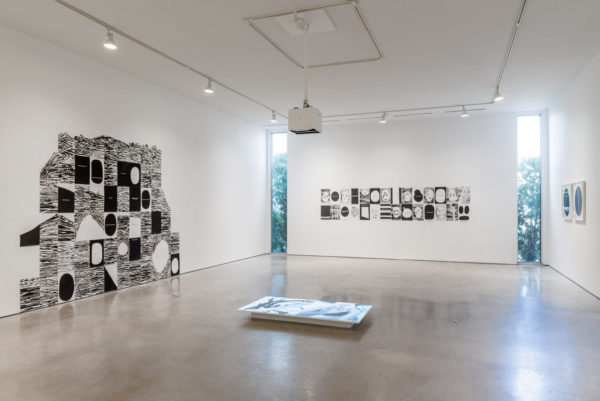
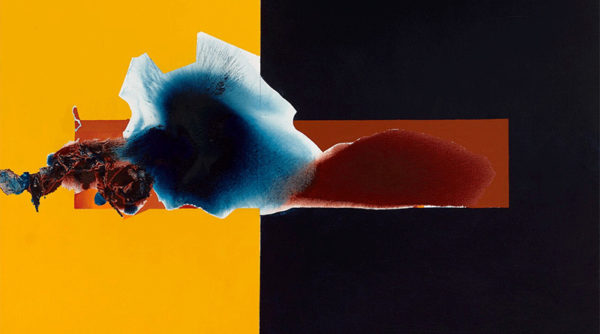
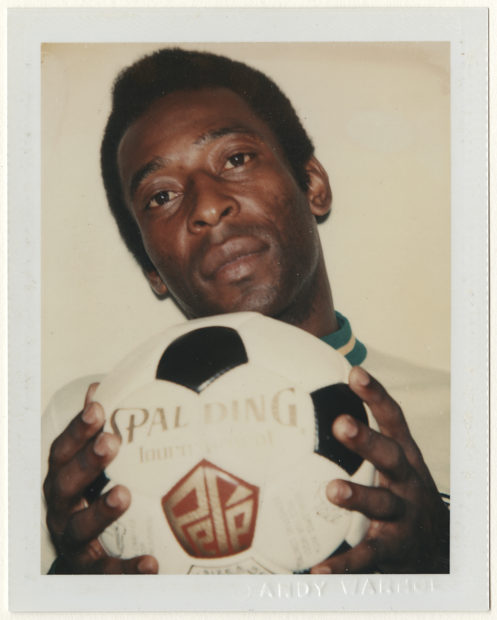
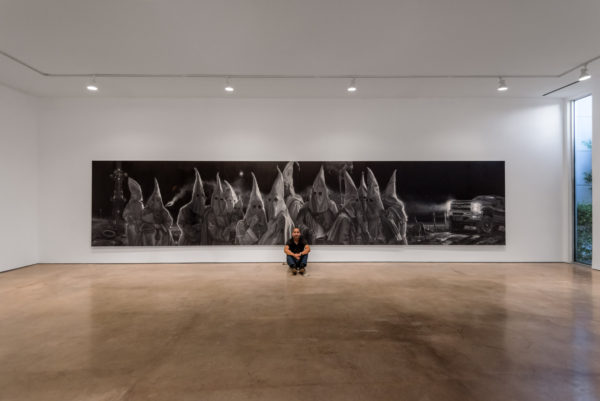
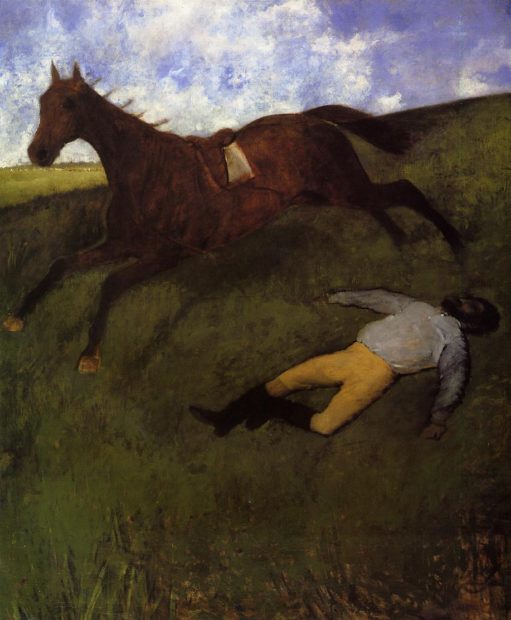


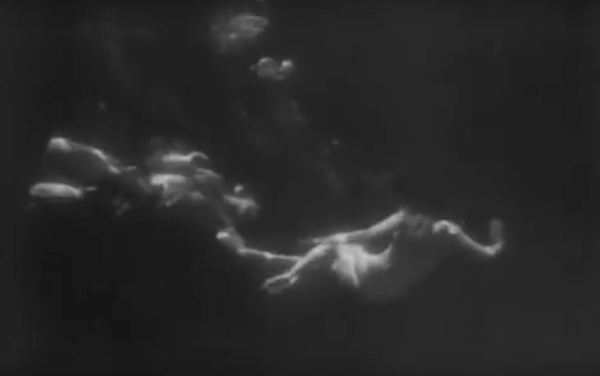
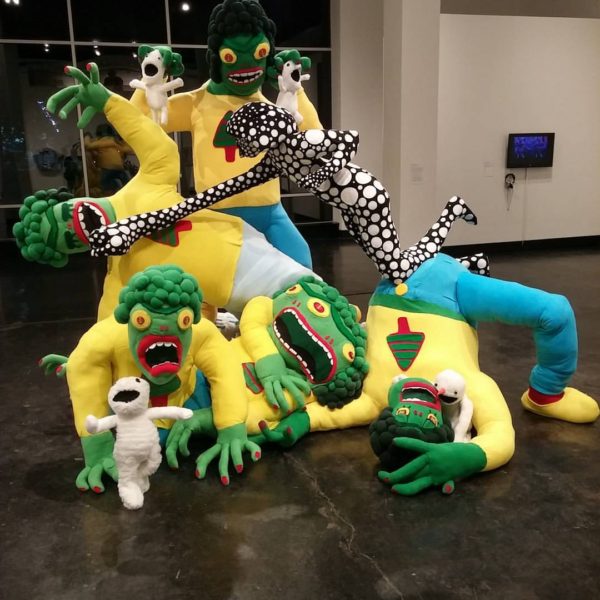

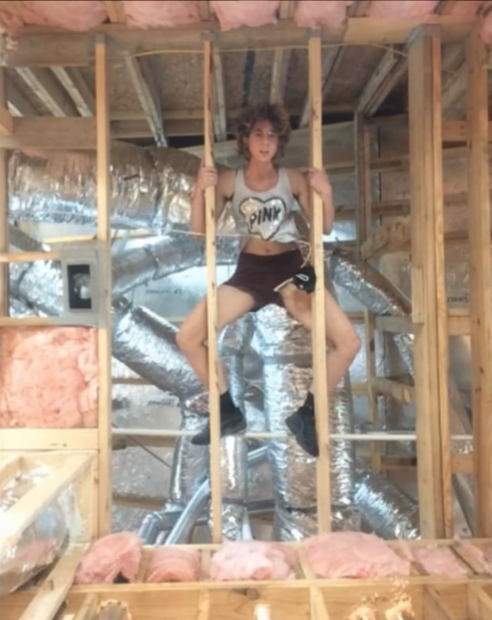
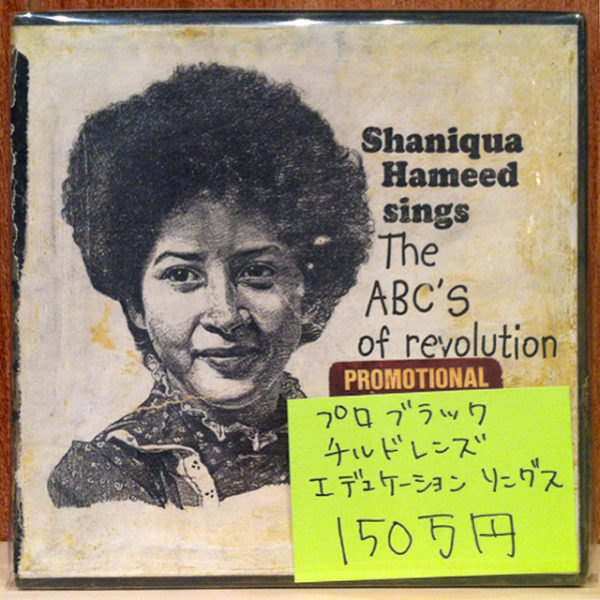
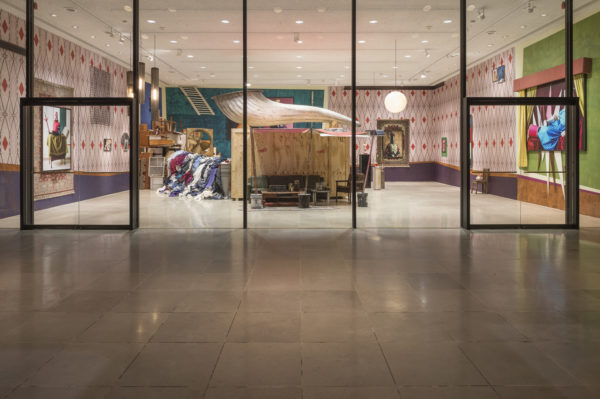
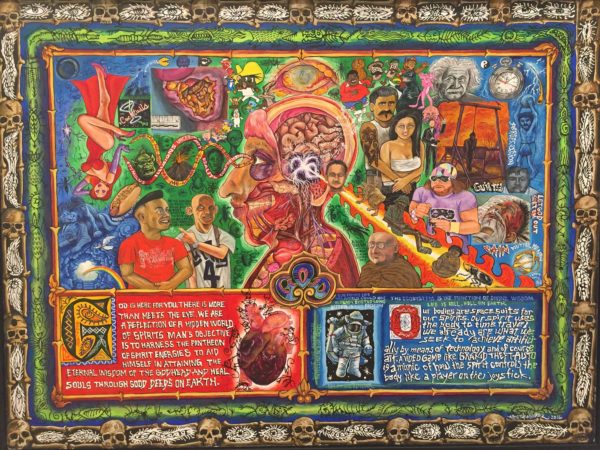

3 comments
awesome y’all mentioned some music here, creative music in texas gets way overlooked and yet has some of the best and hardest working and nicest practitioners in the “biz”, in the music world which stinks of poppity pop crap creative music is ignored, and often in then art world where, … well, you know how effed the art world is, so good job Glasstire, now lets all prepare for the apocalypse 🙂
Our US democracy as we now know it will on January 20, 2017, definitely have its landscape changed, shaken, and unfortunately a source of embarassment for Americans. It doesn’t matter who you support or what you believe, I strongly agree with Bob Dylan, The Times They Are A Changin’. It’s great that strong statements and points of view can be made through art in a rather unrestrictive manner. Let us be stronger and more perservant than ever before.
FYI, the link in this sentence, on the artist’s name, takes the reader to http://www.apple.com
JooYoung Choi was everywhere this year.